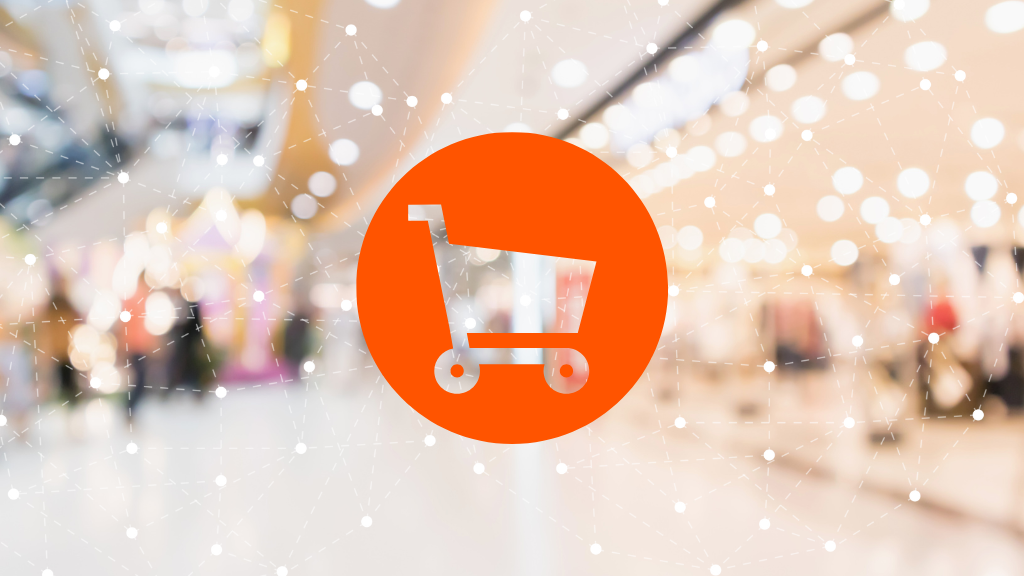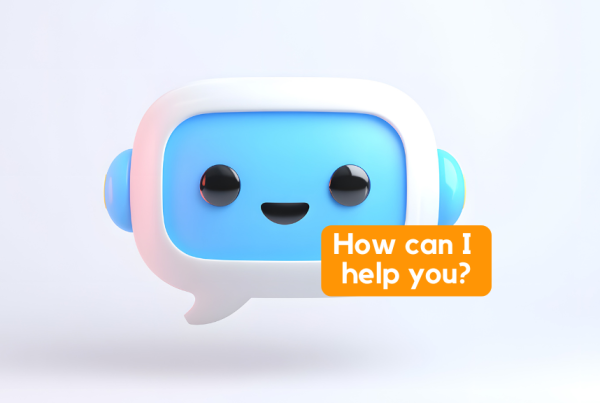Seventy percent of online shoppers add items to their cart and walk away. If you’re running an e-commerce store, that statistic should make your stomach drop. For every ten people who decide they want your product enough to add it to their cart, seven disappear before completing the purchase.
But here’s the perspective shift that changes everything: cart abandonment isn’t a problem, it’s an opportunity. Those customers told you exactly what they want. They demonstrated clear purchase intent. They’re not cold leads—they’re warm prospects who just need the right nudge at the right time.
The stores that treat cart abandonment as lost sales struggle. The stores that understand the psychology behind why people abandon carts and respond strategically turn abandoned carts into their most profitable revenue channel. Let’s explore what’s really happening in your customers’ heads and how to bring them back without blowing your budget.
The Real Reasons People Abandon Carts
Before you can recover abandoned carts effectively, you need to understand why customers abandon in the first place. The answer is rarely “they weren’t serious about buying.”
Unexpected costs shock people into leaving. Your product costs $50, but shipping adds $15 and taxes add another $8. Suddenly the purchase is 46% more expensive than expected. That psychological whiplash causes people to pause and reconsider. They’re not rejecting your product—they’re rejecting the surprise.
Comparison shopping is built into online behavior. Customers add items to carts across multiple stores, then evaluate options side by side. Your cart abandonment might have nothing to do with your store and everything to do with normal shopping behavior. They’re conducting research, not rejecting you.
Timing isn’t always right. Someone browses during lunch break but can’t complete checkout because they left their wallet at home. They’re interrupted by a work call. Their kid needs attention. Life happens. They fully intend to come back, but then forget.
Trust concerns create hesitation. First-time customers especially wonder: Is this site legitimate? Will my credit card information be secure? What if the product doesn’t match the description? These aren’t objections to your product—they’re objections to the unknown.
Decision paralysis freezes purchase behavior. You offer twelve color options and five sizes. They’re excited about the product but can’t decide which variant to choose. Rather than risk choosing wrong, they abandon the cart intending to research more and return later.
Account creation requirements add friction. They’re ready to buy, then hit a wall: “Create an account to continue.” They don’t want another password to remember or another inbox full of marketing emails. The friction outweighs the desire, so they leave.
Understanding these psychological triggers changes how you approach recovery. You’re not convincing people who don’t want your product—you’re removing barriers for people who already demonstrated they want it.
The Strategic Recovery Framework
Cart abandonment recovery isn’t about bombarding customers with desperate discount codes. It’s about systematically addressing the psychological barriers that caused abandonment in the first place, with timing and messaging that respects the customer’s intelligence.
The most effective recovery strategies follow a three-email sequence that escalates from gentle reminder to problem-solving to incentive. Each email serves a specific psychological purpose and arrives at a specific time designed to maximize recovery without annoying potential customers.
This isn’t theory—it’s proven strategy that e-commerce stores of all sizes use to recover 15-30% of abandoned carts. The difference between stores that recover 15% and stores that recover 30% isn’t budget. It’s psychology and execution.
Email One: The Friendly Reminder
Your first recovery email should send within one hour of cart abandonment. Speed matters enormously because purchase intent decays rapidly. Wait 24 hours and that customer has moved on mentally, compared prices elsewhere, or simply forgotten what they were doing.
The psychology here is simple: you’re providing a helpful service, not making a sales pitch. Most cart abandoners didn’t make a conscious decision to leave—they got distracted, interrupted, or intended to return later and forgot. Your email is genuinely helpful.
The subject line should be straightforward and helpful: “You left something behind” or “Your cart is waiting” or “Still interested in [product name]?” Avoid desperate language like “Don’t miss out!” or “Last chance!” You’re not creating false urgency—you’re providing a useful reminder.
The email body should be visual and simple. Show product images from their cart with names and prices. Remind them what caught their interest. Include a prominent call-to-action button that takes them directly back to their cart, not your homepage. Make returning as frictionless as possible.
Don’t include discounts in this first email. You’re testing whether the abandonment was accidental or intentional. Many customers will complete their purchase after a simple reminder, and offering unnecessary discounts trains customers to abandon carts to wait for deals.
Include subtle trust signals—your return policy, security badges, customer service contact information. Remember that trust concerns drive abandonment. Surface the information that builds confidence without overwhelming the message.
Email Two: The Problem Solver
If the customer doesn’t respond to your first email, send a second message 24 hours after abandonment. The psychology shifts here from reminder to problem-solver. They’ve now ignored one email, suggesting the abandonment was intentional rather than accidental. Something stopped them from completing the purchase.
Your job is systematically addressing the most common barriers to purchase. The subject line should acknowledge potential concerns: “Questions about your order?” or “Here to help with your purchase” or “Let’s solve this together.”
The email should include customer reviews and ratings for the products in their cart. Social proof reduces purchase anxiety. When customers see that dozens or hundreds of others bought and loved the same product, trust concerns diminish.
Highlight your return policy prominently. Make it clear that buying isn’t risky—if they’re unsatisfied, returning is easy. Money-back guarantees and free return shipping eliminate the fear of making a wrong decision.
Include answers to common questions without making them search for information. Shipping timeframes, sizing guidance, product specifications, warranty information—surface the details that might be causing hesitation.
Add a personal touch with a direct response option: “Have questions? Reply to this email and I’ll respond personally.” For budget-conscious stores, this doesn’t mean hiring support staff. It means connecting abandoned cart emails to your inbox so you can respond when needed. Most customers won’t reply, but knowing they can builds trust.
Still no discount. You’re removing barriers to purchase, not lowering the price. Save your ammunition for the final message.
Email Three: The Strategic Incentive
If two emails haven’t recovered the cart, send your final message 48-72 hours after abandonment. This is your Hail Mary—the customer has demonstrated clear interest but multiple barriers to purchase. Now it’s time to provide an incentive that tips the scales.
The subject line creates urgency: “Your cart expires in 24 hours—save 10%” or “Last chance to save on your order” or “We saved your favorites—here’s 15% off.” You’re finally introducing scarcity and incentive.
The discount should be meaningful but not excessive. Ten to fifteen percent often provides enough motivation without training customers to always wait for deals. The exact percentage depends on your margins, but the principle holds: make it worthwhile without giving away profit unnecessarily.
Make the offer time-limited—24 to 48 hours maximum. Real urgency works because it triggers loss aversion psychology. They’re not just gaining a discount; they’re avoiding losing a discount. That psychological frame is powerful.
Include everything from email two—reviews, return policy, trust signals—plus the discount code prominently displayed. You’re combining all your psychological tools in one final push.
After this third email, stop. Three messages respects the customer without becoming annoying. If they haven’t converted after a helpful reminder, problem-solving support, and a discount offer, continuing to email them damages your brand more than it helps revenue.
Budget-Friendly Implementation Tactics
Here’s where budget-conscious stores often get stuck: they think effective cart abandonment requires expensive enterprise platforms. That’s false. The tools exist at every price point—success depends on strategy, not spending.
Most e-commerce platforms include basic abandoned cart features. Shopify builds it into plans starting at $39 monthly. WooCommerce offers free plugins like Abandoned Cart Lite that handle basic recovery. If you’re on these platforms, you already have the foundation.
For email delivery, leverage your existing email marketing platform. Mailchimp, Klaviyo, Omnisend, and others include e-commerce integration and automation specifically designed for cart recovery. You’re not adding new expenses—you’re using tools you likely already pay for.
The expensive part isn’t the technology—it’s the creative. Professional email design, compelling copy, and product photography matter. But here’s the budget-friendly secret: start simple and iterate. A plain-text email with product images performs remarkably well if the messaging is right. Polish can come later after you’re seeing results.
Test one variable at a time. Try different subject lines on email one and measure open rates. Test discount percentages on email three and track conversion rates. A/B testing built into most platforms doesn’t cost extra and helps you optimize without guessing.
For stores under 1,000 visitors monthly, manual processes work fine. Set up automated emails through your platform and monitor results weekly. You don’t need data scientists or marketing teams—you need consistent execution and willingness to learn from results.
Beyond Email: Multi-Channel Recovery Strategies
Email is foundational, but it’s not the only recovery channel. Budget-conscious stores can implement additional touchpoints without significant investment.
Retargeting ads through Facebook and Google remind customers about their abandoned carts as they browse other sites. The psychological principle is repetition—seeing your product multiple times increases purchase likelihood. Most platforms offer retargeting starting around $5-10 daily, making it accessible even for small stores.
SMS recovery works for customers who’ve shared phone numbers. Text messages have dramatically higher open rates than email—over 90% compared to 20-30% for email. A single abandoned cart text message 2-3 hours after abandonment often recovers sales email misses. Platforms like Postscript or Attentive start around $20-50 monthly depending on message volume.
Push notifications for customers who’ve downloaded your mobile app or allowed browser notifications provide another touchpoint. These are immediate, free to send, and effective for reminding customers about their carts.
The key is coordination—don’t bombard customers across every channel simultaneously. Space out your touchpoints. Email within one hour, SMS at three hours, retargeting ads for the next week. Multiple touches feel helpful rather than desperate when properly sequenced.
Preventing Abandonment in the First Place
Recovery is profitable, but prevention is better. While you’re building your recovery system, simultaneously address the root causes of abandonment on your site.
Display shipping costs and taxes early in the checkout process. Better yet, offer free shipping if your margins allow it or include shipping in product pricing. Eliminating surprise costs prevents the sticker shock that drives abandonment.
Simplify your checkout process ruthlessly. Every additional field, every extra click, every moment of confusion increases abandonment rates.
Offer guest checkout—don’t force account creation. The faster someone can complete their purchase, the more likely they will.
Add trust signals throughout checkout: security badges, money-back guarantees, customer testimonials, return policy links. Make buying feel safe, not risky.
Use progress indicators that show customers where they are in the checkout process. Three steps feels manageable. An unknown number of steps creates anxiety and abandonment.
Optimize for mobile religiously. Over half of e-commerce traffic comes from phones, but mobile checkout remains clunky on many sites. Test your checkout process on multiple devices and fix friction points immediately.
The stores that recover the highest percentage of abandoned carts aren’t just good at recovery emails—they’ve also minimized the barriers that cause abandonment in the first place.
Measuring Success and Iterating
Cart abandonment recovery becomes profitable when you measure results and optimize based on data rather than assumptions. Track these metrics monthly to understand what’s working.
Your recovery rate is the percentage of abandoned carts that convert after receiving recovery emails. Industry average is 8-15%, but optimized sequences achieve 20-30%. Calculate by dividing recovered carts by total abandoned carts.
Revenue per abandoned cart shows the actual dollar impact of your recovery efforts. Multiply your average order value by your recovery rate. This number should grow as you optimize your sequence.
Open rates and click rates for each email in your sequence reveal where customers engage and where they don’t. Low open rates suggest subject line problems. Low click rates suggest messaging or design issues.
Conversion rates by discount level help you find the optimal incentive. Test 10% versus 15% discounts and measure which generates more profit (not just more conversions—more profit after accounting for the discount).
Review these metrics monthly and make one change at a time. Optimization is gradual—small improvements compound into significant revenue gains over time.
The Psychology of Scarcity and Urgency
The most powerful psychological principle in cart recovery is scarcity—but only if used authentically. Fake urgency damages trust. Real urgency converts.
Limited inventory creates genuine scarcity. “Only 3 left in stock” in your recovery email works because it’s true. Customers don’t want to miss out on something that’s actually running low.
Time-limited discounts create urgency. “This code expires in 24 hours” motivates action because the opportunity is genuinely temporary.
Seasonal availability works for certain products. “Last chance before winter” for pool supplies or “Holiday inventory selling out” during December creates real urgency based on calendar reality.
Never fake scarcity. False countdown timers that reset, fake low inventory warnings, or imaginary deadlines damage credibility more than they boost conversions. Customers are smart—they notice manipulation and punish it with negative reviews and lost trust.
Your Cart Recovery Action Plan
Start simple and scale up. Implement your three-email sequence this week with basic templates from your e-commerce platform. Don’t wait for perfect design or sophisticated segmentation. A simple sequence working is better than a complex sequence in planning limbo.
Monitor results for 30 days and calculate your recovery rate and revenue impact. You’ll likely see immediate returns that justify further optimization.
Add one improvement per month: better subject lines, stronger product images, review integration, SMS recovery. Gradual improvement beats trying to implement everything at once and getting overwhelmed.
Remember the core psychology: these customers already want your product. Your job isn’t convincing them to buy—it’s removing the barriers that stopped them. Stay helpful, stay strategic, and watch your abandoned carts become your most reliable revenue source.
The stores crushing it in e-commerce aren’t lucky. They understand psychology, implement smart recovery sequences, and optimize based on data. You can do the same, regardless of budget. The opportunity is sitting in your abandoned carts right now. Go recover it.




